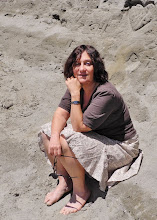.jpg) |
| Click to view the entire article |
If I had only known then what I know now. I could tell my sixteen-year-old self that my father would walk away from the strain of a marriage to a stage parent, never to return. I would tell myself to take a good long look at the violin and recognize it for what it really is: a beautiful instrument certainly, but basically a wooden box with strings. It is a thing. A thing of beauty, for sure, but not something which warrants a life of servitude.
I would tell my sixteen-year-old self that the world desires youth and beauty. No matter how accomplished one might become, another female, one who is younger, sexier, more nimble, will take center stage. You see this in the world of opera, in dance; you see this even in orchestras. You see this everywhere. Be prepared for the reality.
I would try to seek that voice of reason, no matter how tiny. I would tell my sixteen-year-old self to always have a back up plan. A plan B. What if, God Forbid, a stroke of bad luck should occur? A hand injury, perhaps, or a pervasive case of bad nerves? What if a mean-spirited personnel manager would tell you that "your services will no longer be required"? Can you digest that if your whole life—your whole universe has been playing the violin?
A degree? Then don't, don't, don't study with the Master, I would yell! Heifetz does not believe in academics for the most gifted students. He is opposed to anything but the cloistered life of an artist. Of course, back then, that was his reality, his time and place. What's more, he was not a woman with maternal instincts. One does not exist solely for a career in music, I would say to myself. There is more. So much more.
I would tell my sixteen-year-old self that the world does not need so many professional violinists. I would glance at my crystal ball and predict that one day there will be tens of thousands well-trained and accomplished youngsters seeking rare and few opportunities in classical music. I would tell my younger self that music makes a fabulous hobby and a worthwhile pursuit for personal enrichment. The delights are endless. Actually, that was what my father told me from the time I was little. Can you believe this? It has taken me fifty plus years to admit that he was correct? Music does not have to become a profession.
I would tell myself: Don't be naive. Anything can happen. Get a life. A wonderful, balanced and wholesome life. Think outside the wooden box.














